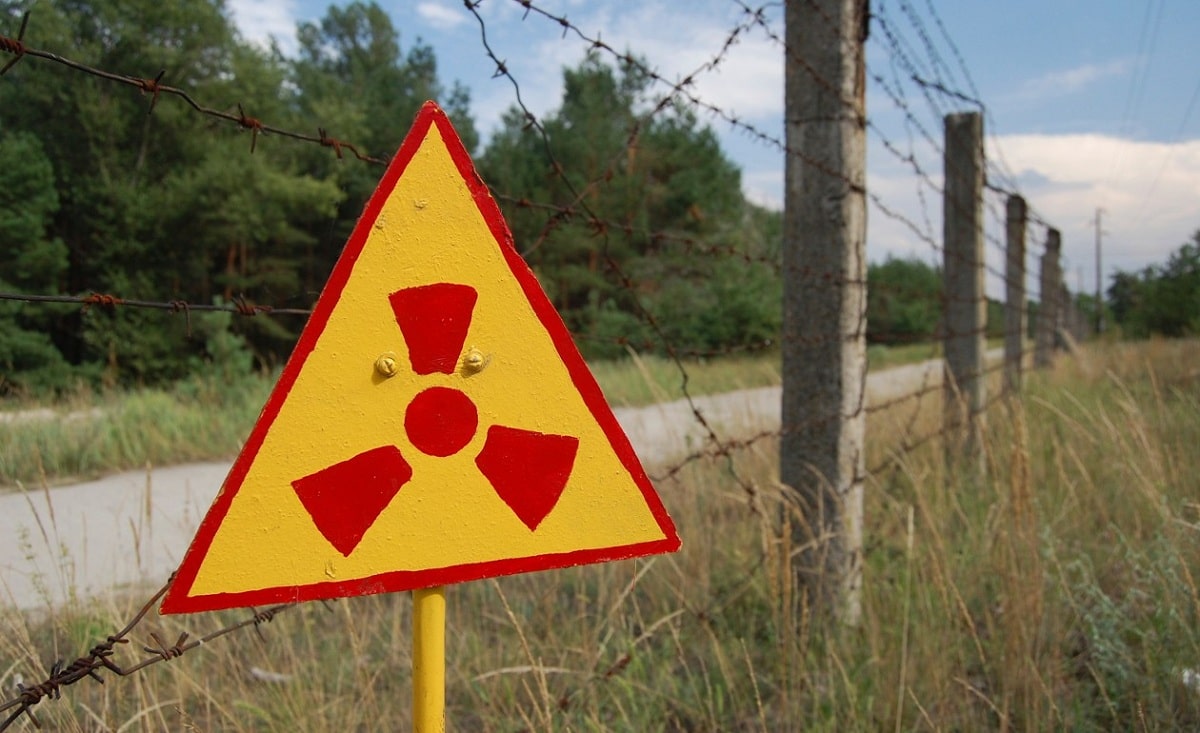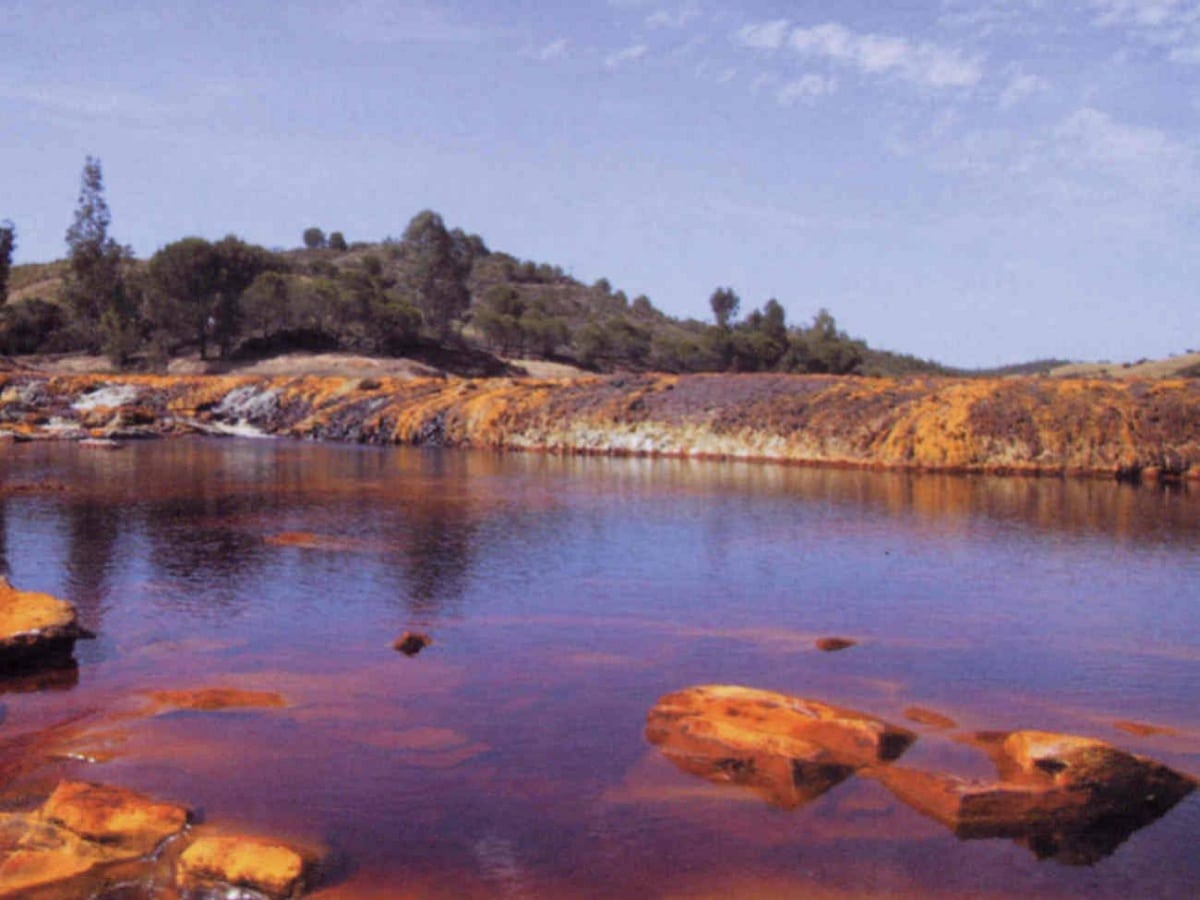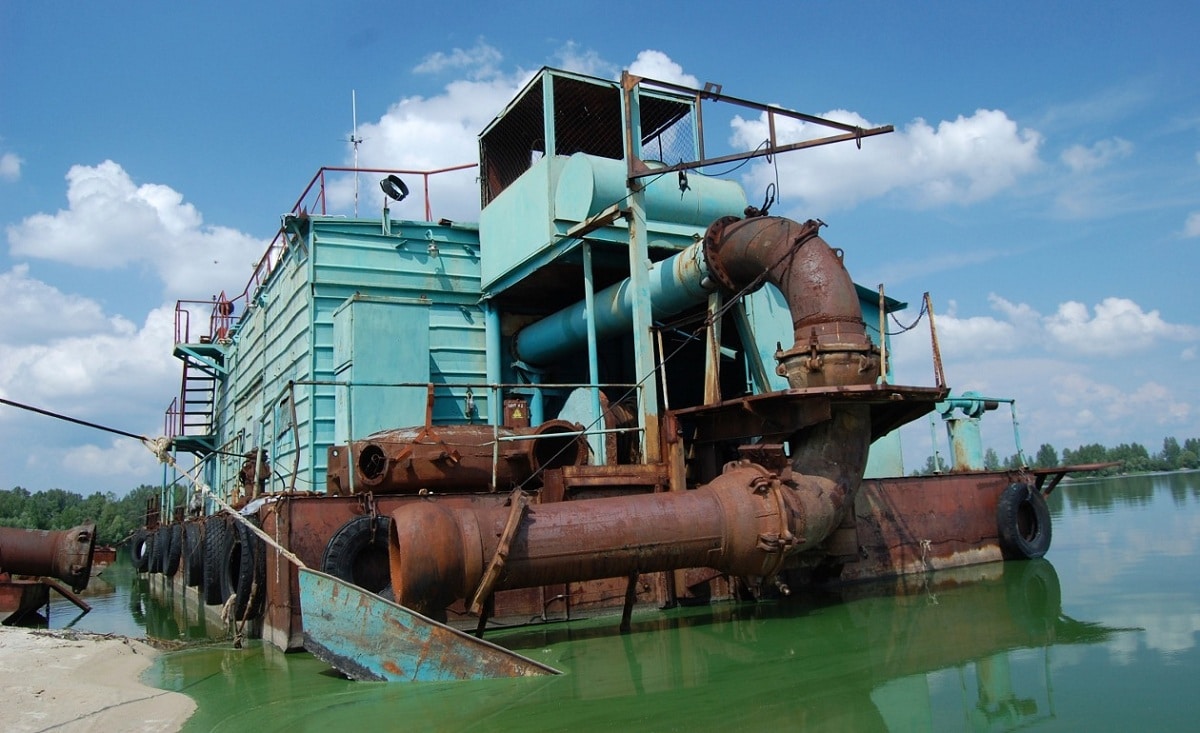
Unfortunately, the karachai lake It's not a great place to relax or sunbathe. In the 1990s, if someone stayed on the ground for an hour, they could be exposed to 600 roentgen radiation, which was safe. Located in the Chelyabinsk region in the southern Urals, the lake has been known since the 1951th century. It often dries up and sometimes even disappears from the map. Since 9, the Mayak Production Association, one of the largest nuclear facilities in the Soviet Union, has dumped radioactive waste into Karachay, which was renamed V-XNUMX Reservoir.
In this article we are going to tell you everything you need to know about Lake Karachay, what its characteristics are and why it is the most polluted lake in the world.
The most polluted lake in the world

Approximately 1,5 square kilometers, Lake Karachay receives radioactive discharges every year. The bottom of the lake is believed to contain radioactive waste in deeper layers of sediment, 3,4 meters deep.
In 1967, a strong wind blew through the area, scattering caesium-137 and strontium-90 (both dangerous elements exposed by the sun during the drought of the 1960s). The weather caused the elements to spread over approximately 2.700 square kilometers, putting the health of thousands of people at risk. Parts of the lake dried up during the 1960s drought, exposing dangerous elements to the sun.
Various cement blocks and rocks were used to close off Karachay, after the authorities had to take action. The project took more than 40 years and was finished on November 26, 2015. The lake accumulated so many dangerous substances over the years that the water emitted more than 120 million curies, more than double what was emitted into the air by the Chernobyl nuclear disaster.
Hundreds or even thousands of years from now, the lake will still be radioactive waste. It's safer to leave the lake alone rather than try to move the debris elsewhere, according to the researchers.
Lake Karachay Monitoring

Yuri Mokrov, assistant to the general director of the Mayar Production Company, says that no country has the experience to keep a dangerous substance like V-9 in reserve. Therefore, Karachay will have his work monitored for a long time to come.
There are many traditional methods of checking water quality, including measuring gamma radiation, the amount of air near the water, and any radionuclides near the water supply. Different seasons exert different pressures on the ground, and geodetic issues are carefully considered during the design process.
future plans for the lake include adding layers of soil and debris over the area, and then growing grass and shrubs in the area. Trees are not allowed because their roots could damage the cement blocks used to make the lake. The nuclear stockpile at the site cannot be affected even by a tornado, according to experts who have been monitoring the site for years.
palliative measures
The first steps to clean up radiation contamination from the lake may have been taken quite late, according to some sources. Between 1978 and 1986, 10.000 concrete blocks were added to the lake to prevent contaminated sediment from spreading. These efforts ended in 2016, but the site is still considered highly contaminated. Some buildings in the area have been abandoned due to high levels of radiation in the groundwater. National Geographic reports that some of the contaminated areas cannot be inhabited.
During the 1990s, spending an hour on the shore of the lake could generate a radiation dose of 600 roentgens, the Daily Mail reported. This is 200.000 times higher than normal radiation levels.
Other polluted rivers
Next to the Mayak power station, there is a larger lake called Lake Kyzyltash. Its water has become polluted very quickly because it is used to cool the plant's reactors. Phytoplankton in the lake have altered their rate of development and have grown faster than normal due to nuclear contamination of the water.
The Techa River originates near the city of Ozyorsk and flows through Lake Karaganda and several other lakes containing radioactive material. The waters of the Techa River merge with the Iset River, which then flows into the Tobol River in Siberia, making it one of the largest rivers in Siberia. Lakes do not exist as sealed bodies of water. They can be connected to aquifers and rivers, including the 240-kilometer-long Techa River.
In 1949, the Kyzyltash River (the river that flows into this lake) was the main source of water in the area, due to the nearby nuclear power plant dumping polluted water into the river. Only two years later, in 1951, major floods occurred in the region, causing radioactive contamination of the soil near the river. Although radioactivity is believed to decrease with distance, there is no evidence that pollution affects the entire ecosystem.
The Techa River has been contaminated with radioactivity for about 50 years. The National Cancer Institute studied 30.000 people who lived in the area to see how many cancer cases there were in the population due to water contamination. It was found that 65% of the people in the region had health problems caused by radioactivity in the water. In that region, there was a 21% increase in cancer cases, a 25% increase in birth defects, a 41% increase in leukemia cases, and an increase in infertile people.
Accidents at Lake Karachay

In 1967, during a long summer, Lake Karachay dried up so much that nuclear waste from the bottom of the lake was blown by the winds over an area of 1.800 square kilometers, exposing some 400.000 people to radiation. Only 180.000 of these people were evacuated.
All accidents related to the Mayak nuclear power plant were kept secret (or at least downplayed, if not secret) by top government officials so as not to reveal their nuclear weapons programs. A curious fact is that the CIA was aware of the accidents and the Mayak nuclear power plant, but also kept it private for fear that it would put their own nuclear program at risk.
In 1987, Plutonium production finally stopped when two of Mayak's five nuclear reactors stopped working. Overall, more than 500.000 people were exposed to radiation after years of operation at the plant, levels approaching the levels of contamination caused by the Chernobyl accident.
Pollution in Lake Karachay continues to this day, and spending an hour by the lake could mean deadly radiation exposure.
I hope that with this information you can learn more about Lake Karachay and its characteristics.
It is a relevant issue where it can be seen how the MAN who believes himself to be an intelligent being is so irrational that he does not calculate the damage he causes globally... Greetings